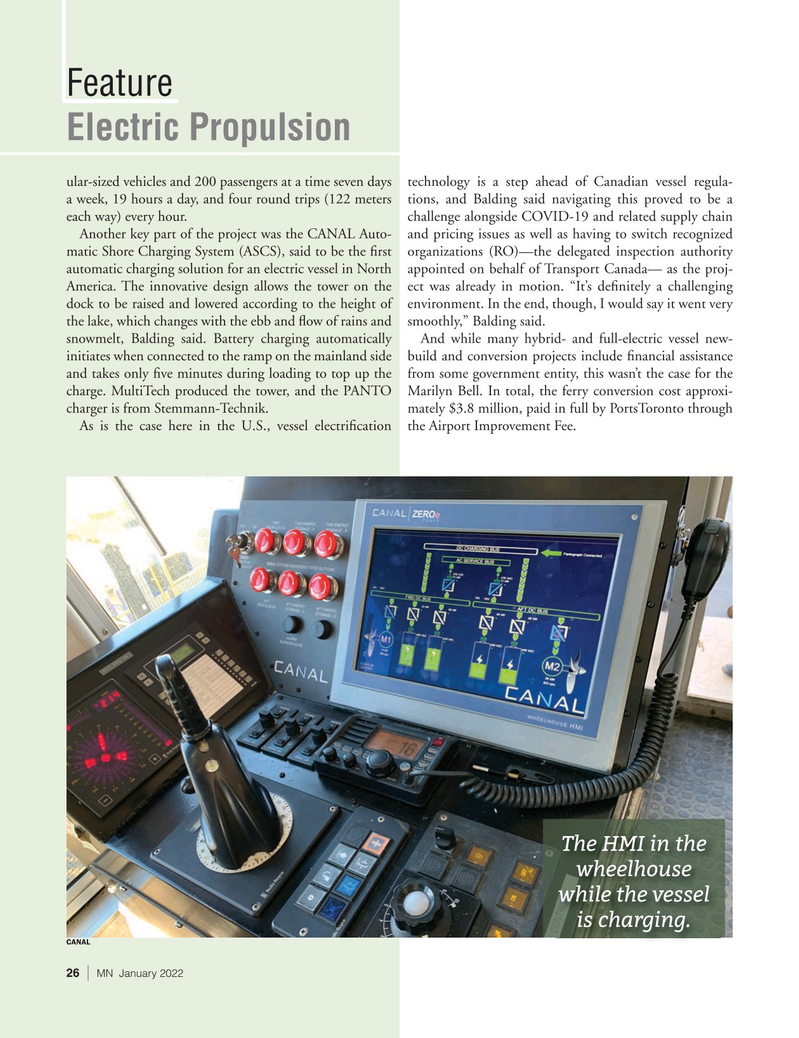
Page 26: of Marine News Magazine (January 2022)
Workboat Propulsion
Read this page in Pdf, Flash or Html5 edition of January 2022 Marine News Magazine
Feature
Electric Propulsion ular-sized vehicles and 200 passengers at a time seven days technology is a step ahead of Canadian vessel regula- a week, 19 hours a day, and four round trips (122 meters tions, and Balding said navigating this proved to be a each way) every hour. challenge alongside COVID-19 and related supply chain
Another key part of the project was the CANAL Auto- and pricing issues as well as having to switch recognized matic Shore Charging System (ASCS), said to be the ? rst organizations (RO)—the delegated inspection authority automatic charging solution for an electric vessel in North appointed on behalf of Transport Canada— as the proj-
America. The innovative design allows the tower on the ect was already in motion. “It’s de? nitely a challenging dock to be raised and lowered according to the height of environment. In the end, though, I would say it went very the lake, which changes with the ebb and ? ow of rains and smoothly,” Balding said.
snowmelt, Balding said. Battery charging automatically And while many hybrid- and full-electric vessel new- initiates when connected to the ramp on the mainland side build and conversion projects include ? nancial assistance and takes only ? ve minutes during loading to top up the from some government entity, this wasn’t the case for the charge. MultiTech produced the tower, and the PANTO Marilyn Bell. In total, the ferry conversion cost approxi- charger is from Stemmann-Technik. mately $3.8 million, paid in full by PortsToronto through
As is the case here in the U.S., vessel electri? cation the Airport Improvement Fee.
The HMI in the wheelhouse while the vessel is charging.
CANAL 26 | MN January 2022

 25
25

 27
27
